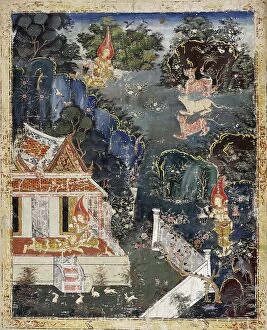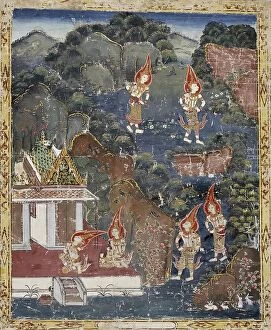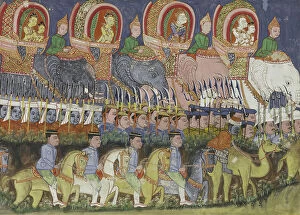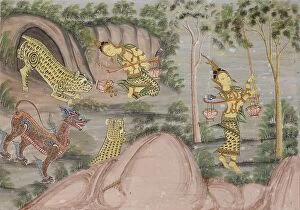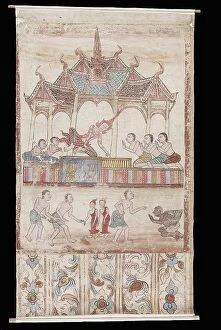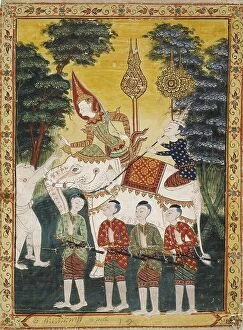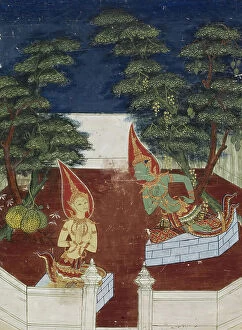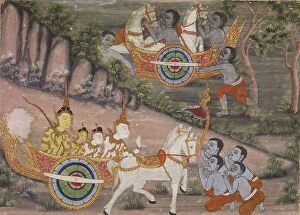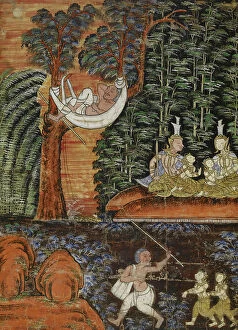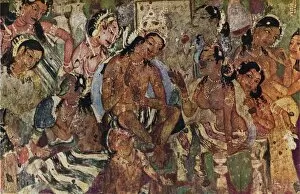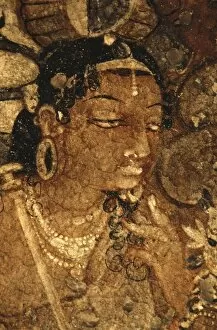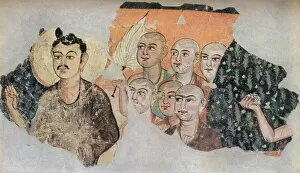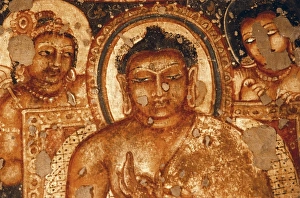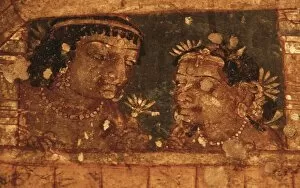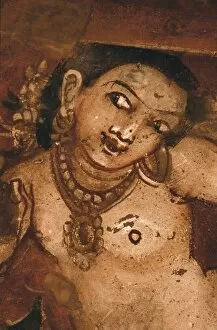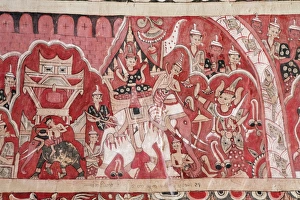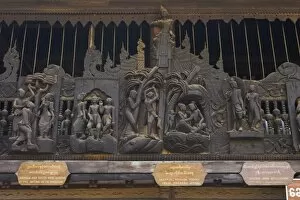Jataka Collection
"Exploring the Ancient Jataka Tales through the Majestic Ajanta Caves" Step into a world of ancient tales
All Professionally Made to Order for Quick Shipping
"Exploring the Ancient Jataka Tales through the Majestic Ajanta Caves" Step into a world of ancient tales and captivating art as you venture into the mesmerizing Ajanta Caves. Dating back to around 480 AD, these caves in India's Maharashtra region hold a treasure trove of wall paintings that depict various aspects of life during that time. One such masterpiece is the wall painting from Cave 17, showcasing Raja Mahajanaka, an important figure from the Jataka tales. These stories narrate the previous lives of Buddha before attaining enlightenment, teaching valuable lessons about morality and compassion. As you gaze at the intricate details on this fresco, your eyes are drawn to the face of Buddha himself – serene and wise, radiating tranquility amidst chaos. It serves as a reminder of his teachings and inspires visitors to seek inner peace. Moving along, another fascinating artwork captures a woman's face with remarkable precision. The delicate brushstrokes bring her features to life, evoking curiosity about her story within this ancient civilization. Was she a queen or an ordinary villager? Only imagination can fill in those gaps. Further exploration reveals yet another figure of a woman – strong and graceful. Her posture exudes confidence and resilience; perhaps she represents an idealized female archetype or symbolizes empowerment within society at that time. The Jataka theme continues throughout these caves with more depictions from different periods like "Jataka (fresco)" dating back centuries ago or even "Jataka" from the end of 17th-Early 18th century - showcasing how these timeless tales have endured across generations. Not limited to just Ajanta Caves alone, remnants like wall paintings recovered from Miran offer glimpses into other regions where Buddhism flourished during its early days. These artifacts provide invaluable insights for archaeologists studying ancient civilizations in Asia. With every step taken inside these sacred caves, one can't help but feel a deep connection to the past.



